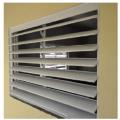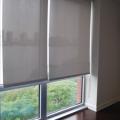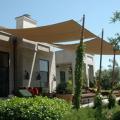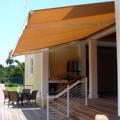Scope
Install window attachments in new or retrofit construction to reduce cooling and heating energy consumption, improve comfort, reduce glare, and improve a home’s resistance to extreme heat events.
- Determine specific goals and priorities for improving each window in a home, including:
- reducing solar heat gain in summer
- reducing heat loss at night in winter
- reducing glare
- reducing nighttime light infiltration
- providing noise control
- increasing privacy
- enhancing security
- providing protection during high winds
- maintaining or improving daylighting
- and/or maintaining views to the outside.
- Use the DOE Efficient Window Coverings website to help compare attachment devices and select which types of attachments best meet your goals.
- Select interior and exterior shading attachment systems that are rated by the Attachments Energy Rating Council (AERC). Look for products that have “Warm Climate” and “Cool Climate” performance ratings appropriate for your needs.
- During construction, pre-wire windows for potential use of motorized and automated shading systems to enable smart and dynamic control of solar gains through windows.
- Integrate exterior and/or interior shading attachments as a new construction feature or as part of a retrofit.
See the Compliance tab for links to related codes and standards and voluntary federal energy-efficiency program requirements.
Description
Window attachments include interior and exterior products that are installed over windows, doors, or skylights in both residential and commercial buildings. Interior products are often referred to as window treatments or window fashions. Interior attachments include blinds, shades, screens, drapes, shutters, window quilts, and surface-applied films. Exterior products include roller shades, shutters, solar screens, and awnings (Figure 1). Attachments also include both interior and exterior storm windows (see the Interior Storm Windows and Panels guide and the Low-E Exterior Storm Windows guide for information on high-performance storm windows).
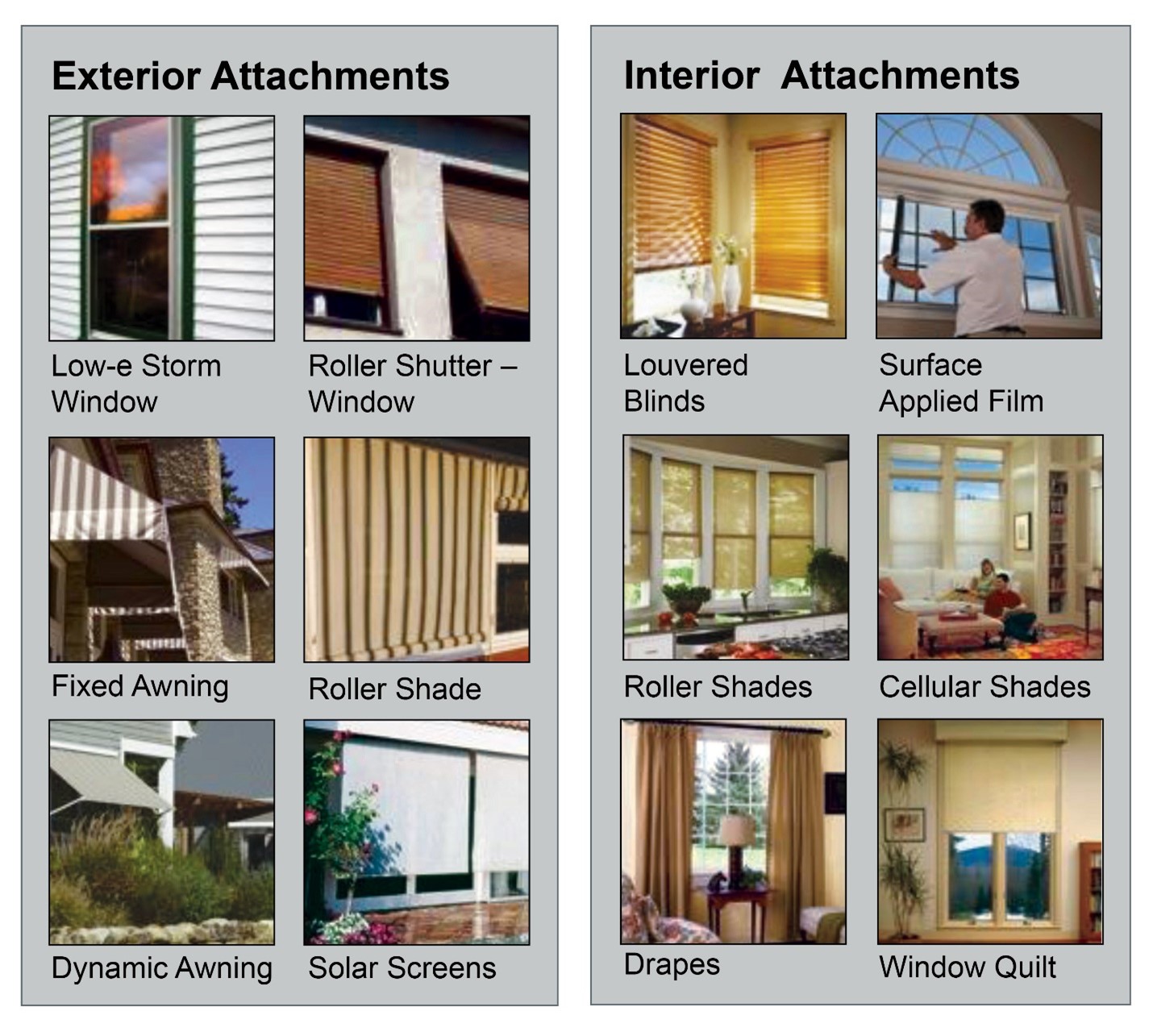
Benefits of Window Attachments
Window attachment products, particularly interior attachments, have traditionally been thought of as decorative features. However, these products can offer a variety of benefits to homeowners, including the following:
- Increased resistance to extreme heat events. This is particularly important if air conditioning has failed or is not available.
- Reduced energy consumption, costs, and emissions due to reduced load on the air conditioning (A/C) system.
- Increased comfort. Even with A/C, shading can improve localized comfort.
- Reduced wear on the A/C system. This results in less maintenance and longer equipment life.
- Daylighting control. Light-filtering window attachments can improve the look and visual comfort of a space by allowing diffuse natural light in while reducing the harsh glare of direct sunlight. Diffuse natural light has less “waste heat” than nearly any lighting technology on the market, so good daylighting can save both cooling and lighting energy (Figure 2).
- Enhanced privacy.
- Reduced noise intrusion.
- Reduced nighttime light intrusion for improved sleeping conditions.
- Protection during high-wind events. Some impact-resistant shading devices, such as Bahama shutters, are designed to perform double duty as protection against flying debris during hurricanes or tornadoes.
- Protection from rain. Some shading devices, such as awnings, protect windows, trim, and siding from rainwater.
- Reduced exposure of interior and exterior surfaces to UV radiation. This can slow the fading and deterioration of fabrics, furniture, wood flooring or decking, trim, siding, plastics, and painted surfaces.
- Heating energy savings, cost savings, improved comfort, and reduced wear on heating equipment. Most window attachments, such as interior cellular shades or exterior roller shutters, can reduce nighttime heat losses through windows during the winter.
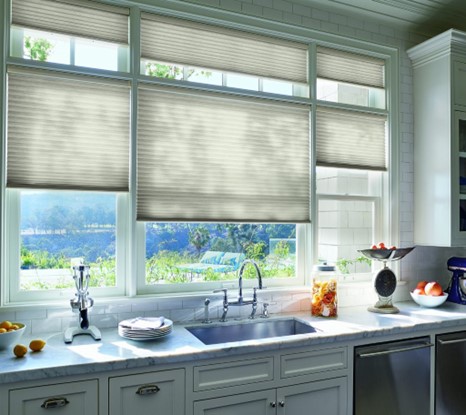
DOE field studies have demonstrated whole home summertime cooling savings ranging from 15% to 25% from the optimized use of high-efficiency shades (both interior and exterior) (Cort et al. 2018, Hunt and Cort 2020). Similar field studies have shown wintertime heating savings of about 12% to 14% (Peterson et al. 2016, Cort et al. 2018).
Studies have also shown that window attachments can increase the survivability of an extreme heat event (Figure 3). A recent study showed that intentional use of window attachments in a non-air-conditioned home during the 2021 heat wave in Portland, Oregon, would have reduced the number of hours considered to be in the “danger” or “extreme danger” heat index categories. Interior roller shades showed a reduction of about 18%, insulating interior shades showed a reduction of about 23%, and exterior shades showed a reduction of about 55% (Rempel et al. 2022).

As compared to other types of shading, such as roof eaves, architectural overhangs, or shade trees, window attachments have several advantages, including:
- They are easy to operate and adjust.
- They are very versatile. Shades, curtains, blinds, drapes, and shutters can all be used fully closed (for shading, insulation, light-blocking, and privacy); fully open (for views, daylight, breeze, and heat gain in winter); or partially open as appropriate for the situation. Some systems allow partial view such as solar screens (Figure 4) and some systems allow diffuse daylighting such as light-filtering shades.
- They are conducive to automation and smart control. This allows optimization for reduced heat gain in summer and increased heat gain in winter.
- They can provide full-coverage-shading for an entire window regardless of the time of day or year. Unlike exterior overhangs, sunlight cannot bypass vertical window attachments regardless of its angle of approach. This makes them very useful on east- or west-facing windows that can be difficult to shade using roof eaves or other horizontal shading systems.
- They are often less costly than other systems.
- They are typically the easiest shading system to implement in a retrofit situation.
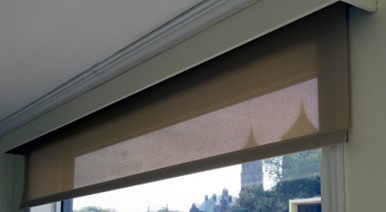
Operability and Automation
One of the greatest advantages of window attachments is their operability. Static shading systems such as roof overhangs or shade trees cannot be easily adjusted by occupants. In contrast, shades, blinds, shutters, and similar attachments give occupants the ability to open, close, and adjust to optimize heat gain, natural light, and view with relative ease. Attachments that can be pulled upwards from the bottom can be a very good complement to exterior overhangs or awnings (Figure 5). When the overhang is unable to shade the lower portion of the window, the shade can be pulled up part way to provide needed shade to the lower portion of the window while still allowing view and indirect light through the upper portion of the window, which is shaded by the exterior overhang. Note that the overhang in Figure 5 is significantly wider than the window, which is necessary to prevent slanting sun rays from bypassing the sides of the overhang as the sun moves through the sky (see Shading and Solar Control for Windows and Skylights for more information).
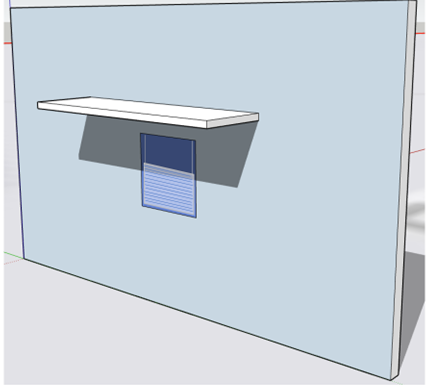
The optimal strategy for operating window attachments for cooling energy savings is to simply close them during the day and open them at night (if it is cooler outside than inside). For heating energy savings during the winter, window attachments should be open when sun is shining on the window to allow solar heat gain and closed during the night and on cloudy days to reduce heat loss out the window.
Operation of window attachments can be automated to optimize energy savings even when the home is empty. DOE research has shown that, although most windows are equipped with some form of operable shading attachment, relatively few are consistently operated in an optimal manner to save energy and control solar gains (DOE 2013). Shade automation can enable homeowners to manage solar gains throughout the day and year based on the climate and season to reduce the HVAC loads while still optimizing light and comfort.
When possible, new homes should be pre-wired during construction to enable motorized and automated shading systems for the windows. Automated shades can also be solar- and battery-powered; however, hard-wired systems eliminate the need for batteries and are typically better able to power the controls for larger (and heavier) shading systems. Automated shades can be integrated into a smart home energy management system for convenience and optimal operation.
Wintertime Performance
Many vertical window attachments can reduce wintertime heating consumption if pulled closed at night (Peterson et al. 2016). Figure 6 shows multilayer cellular shades, one of the most effective interior attachment options for reducing heat loss in winter.
When utilizing interior shades to reduce heat loss in the winter, there is the potential for condensation or interior frost to form on the window glass. When an interior insulating shade is closed, airflow across the interior surface of the windowpane slows and the pane cools down, potentially allowing condensation or frost to form. This issue can be mitigated by the following measures:
- Leave the shade’s bottom rail ½ inch from the windowsill to allow a small amount of airflow along the surface of the pane.
- Ensure the shades are open during the daytime to let the window dry out.
- Install better windows or storm windows (Pilet et. al 2022)
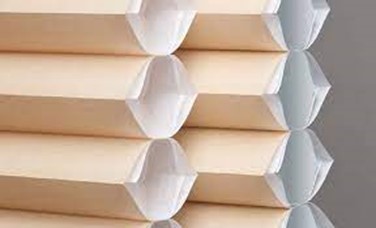
Unlike interior window attachments, exterior attachments such as storm windows or roll-down shutters tend to keep the windowpanes warmer during cold weather, which reduces the risk of condensation rather than increasing it. In fact, exterior attachments can be used to counteract condensation issues caused by interior attachments.
While exterior attachments reduce the risk of wintertime condensation on windowpanes, there is the risk that condensation will accumulate on the interior surface of the attachment itself. This can occur if the window is not airtight, allowing warm, moist indoor air to leak into the cavity space between the window and the exterior attachment. When the warm air comes in contact with the cold surface of the attachment, condensation can form. Since the condensation is outside of the home, and since exterior attachments are designed to withstand the elements, this may be a non-issue in many installations. The best way to mitigate this phenomenon is to improve the air seal of the window.
DOE Efficient Window Coverings Tool
The U.S. Department of Energy (DOE) has developed a window attachments selection tool, located on the Efficient Window Coverings (EWC) website. This tool provides guidance on the best window attachment solutions for different situations. Various types of window attachments can be directly compared based on thermal, visual, functional, and durability factors. Specific factors include solar heat control, airtightness, insulation, summer comfort, winter comfort, condensation resistance, ventilation, view, visible transmittance, daylighting control, glare control, privacy, window protection, egress, security, noise control, sound absorption, durability, and service life. Each of these factors is explained in the tool. Figure 7 shows a comparison of five different types of shading attachments on the Efficient Window Coverings website.
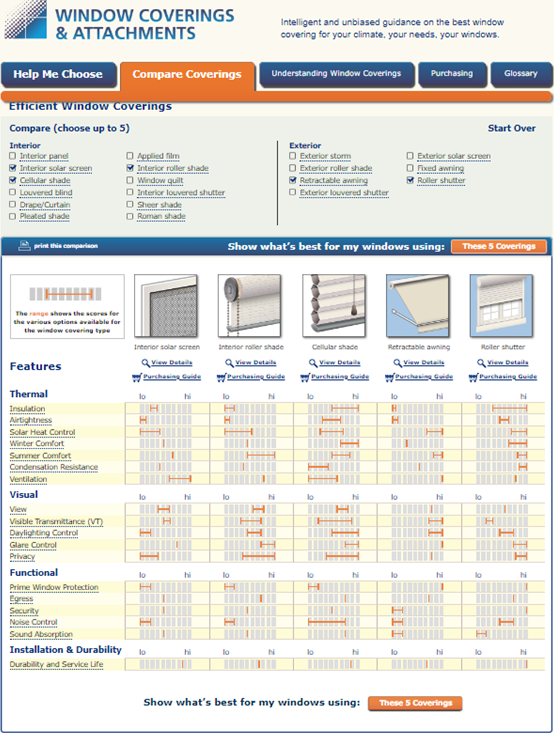
Attachments Energy Rating Council (AERC)
While the Efficient Window Coverings website helps one select which type of shading attachment is best for a given situation, the Attachments Energy Rating Council (AERC) helps a person compare and select specific brands and models within each category. The AERC is an independent, non-profit rating council that provides accurate and credible information about the energy performance of window attachment products. As of 2020, AERC has energy ratings available for interior and exterior storm windows, blinds, cellular shades, roller shades, pleated shades, and solar screens, with plans to develop energy ratings for exterior shades and awnings as well as automation in 2023. In addition to rating the U-factor, solar heat gain coefficient (SHGC), air leakage, and visual transmittance of each product, the AERC has developed the “Cool Climate Rating” and the “Warm Climate Rating” to compare products. The Cool Climate Rating indicates how well a window attachment can help reduce heat loss in a cool climate and the Warm Climate Rating indicates how well an attachment can help prevent heat gain in a warm climate.
Figure 8 shows an example AERC product label. The higher the rating, the better the attachment performs. The AERC rating can be used to compare products by using the product search feature on the AERC website.
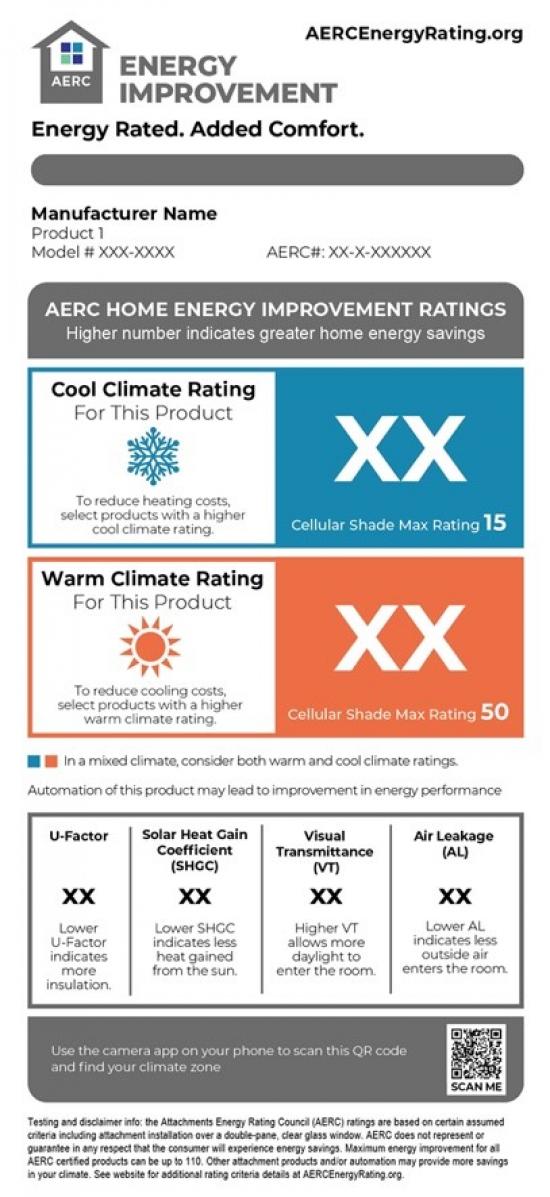
Interior Window Attachments
Shading attachments on the interior of windows are versatile, widely available, and typically easy to operate. They can supplement exterior shading approaches to improve performance and flexibility throughout the day or year, and to provide privacy at night (Figure 9).

Types of interior window attachments include cellular shades, drapes, curtains, interior louvered shutters, interior roller shades, blinds, pleated shades, Roman shades, sheer shades, window quilts, applied films, interior panels (storm windows), and interior solar screens. Figure 10 shows the categories used by the DOE Efficient Window Coverings website for interior window shading attachments. AERC ratings are available for most types of interior products.
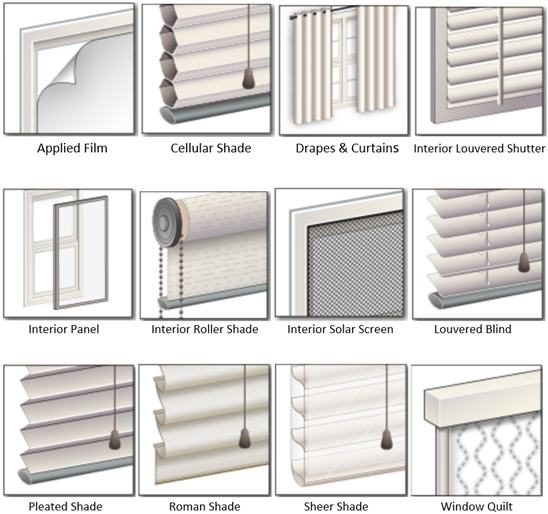
Interior window attachments have several advantages over exterior attachments:
- They are protected from the elements.
- They are often less costly than exterior attachments.
- They are typically easier to implement in a retrofit situation.
- There are more options available for light-filtering and daylighting control (Figure 11).

Interior attachments have some disadvantages as well. They can be less effective at reducing heat gain than comparable exterior shading systems because they do not block direct sunlight until after it has already passed through the window. It is more difficult to reflect heat and light back out a window than to simply block it before it reaches the window. However, shading performance should be assessed on a case-by-case basis using AERC ratings.
When utilizing interior shades to reduce heat loss in the winter, there is the potential for condensation or interior frost to form on the window glass, which can lead to peeling paint, trim damage, and mold.
Exterior Window Attachments
Exterior window attachments block solar heat before it reaches the window. Systems include shutters (including hurricane shutters), roller shades, fixed shades/blinds, solar screens, fixed awnings, operable awnings, and storm windows. Figure 12 shows the categories used by the Efficient Window Coverings website for exterior window shading attachments.
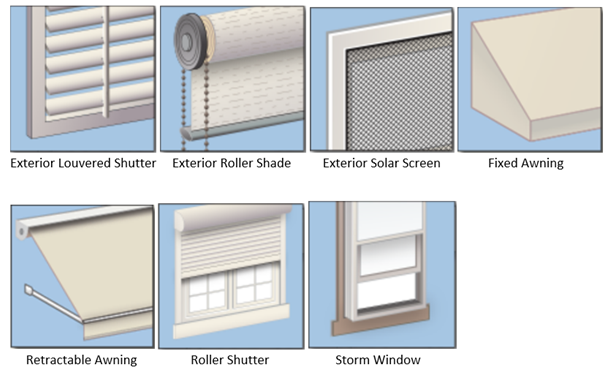
Exterior window attachments have some advantages over interior attachments, including:
- They block sunlight before it passes through the window, so they are typically more effective at reducing solar heat gain.
- They insulate windows from the outside, which reduces risk of condensation in winter by helping keep windowpanes warmer (the opposite is true of interior attachments).
- They can protect windows from the elements, including wind-borne debris.
Exterior shading can be highly versatile and aesthetically pleasing. Figure 13 shows customized attachments on the south side of a model home that can be adjusted to modify summer and winter heat gain, daylighting, view, and breezes.
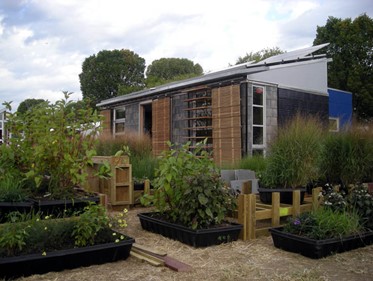
Figure 14 provides an example of a view-preserving external solar screen that can be lifted when the sun is not shining on the window. When the sun is shining on the window, the solar screen greatly reduces heat gain and glare while preserving view to the outside. Because the screen is located outside the window, solar heat absorbed by the screen remains outside the home.
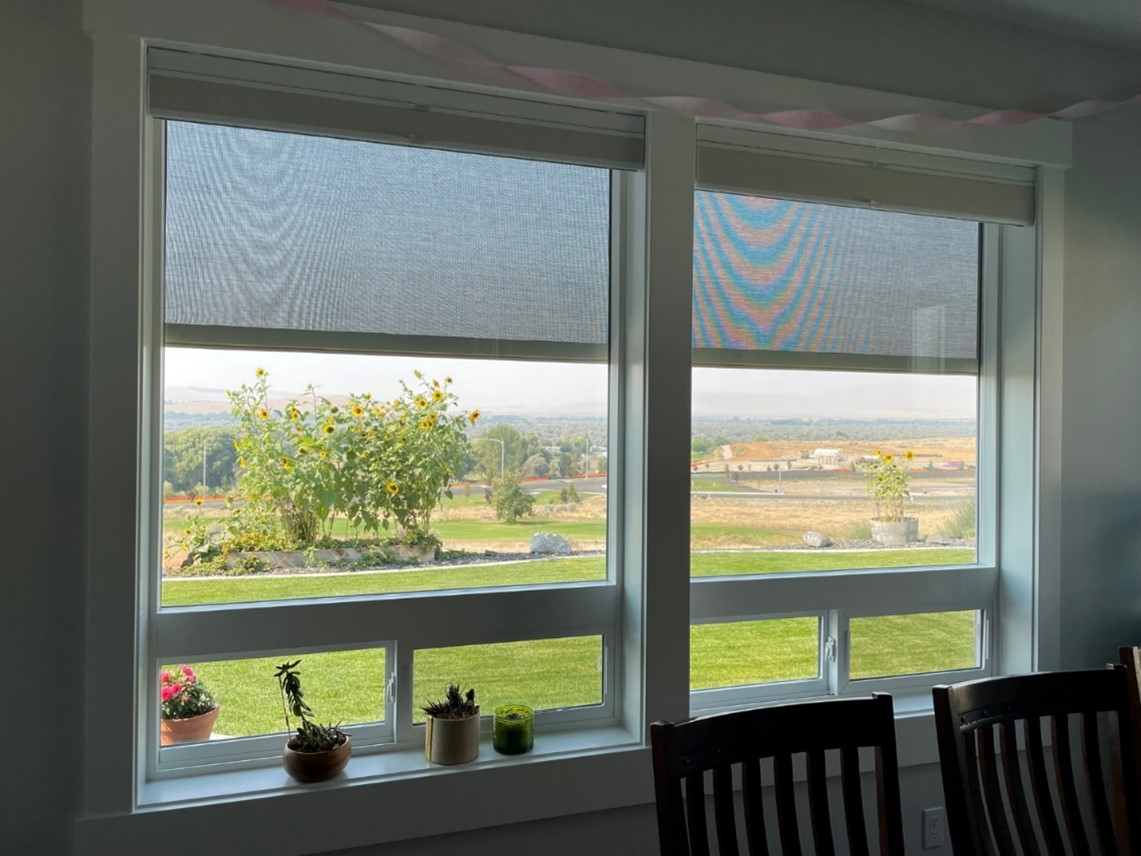
Horizontal exterior shading attachments such as awnings can be very effective at shading windows while still allowing view. However, direct sunlight is likely to bypass awnings when the sun is not directly overhead. Supplementing with vertical shading such as roller shades or blinds can be an effective approach to managing solar heat throughout the day.
Some models of roller shutters and other exterior attachments are designed for protection against debris during high winds (Figures 15 and 16). This can be an extremely valuable second function of a shading system in areas prone to high winds. See the “Windows Have Impact-Rated Glass, Fire-Resistant Glass, or Protective Coverings” guide for more information.
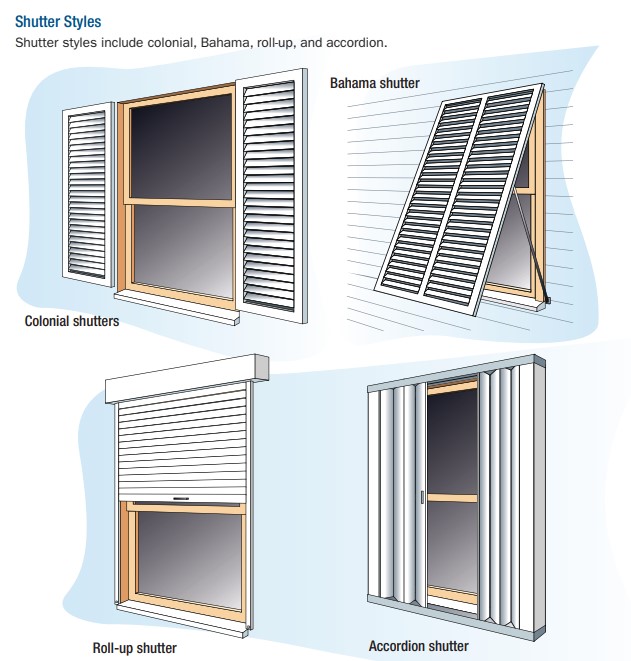
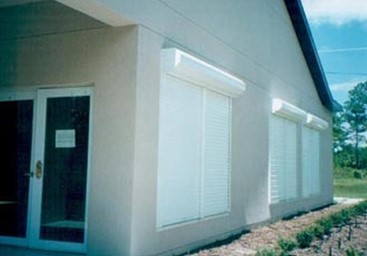
Bahama shutters, shown in Figures 17 and 18, are one type of exterior attachment that can double as storm protection devices in hurricane-prone areas. These types of shades are simple to adjust and operate open or closed. When closed, they provide full window shading, which is particularly valuable on east- and west-facing windows. When raised open, they can provide partial shade to south-, east-, or west-facing windows. In the raised position they will allow some sunlight to strike windows when the sun is at an angle to one side or the other from the window.
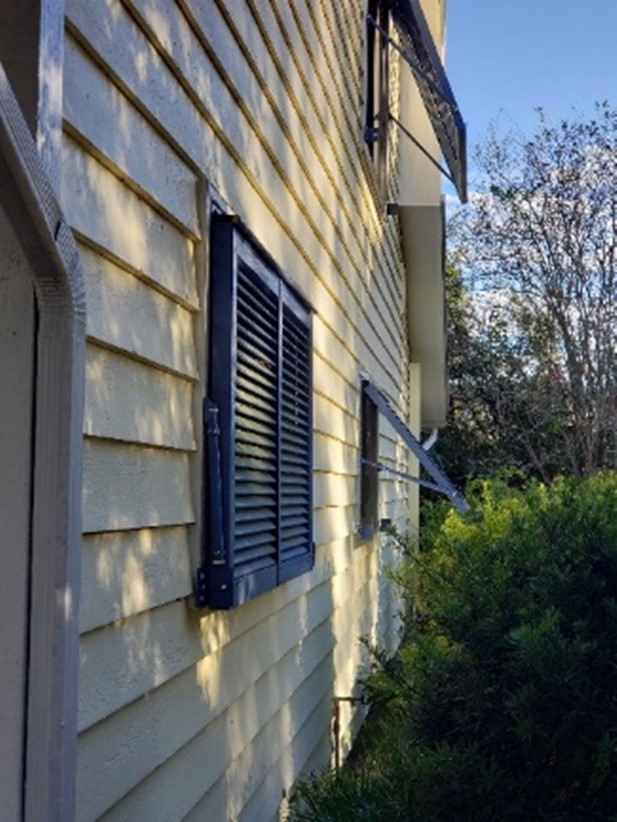
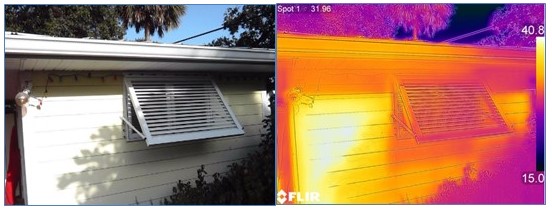
Insect Screens
Although not normally installed for solar control, simple insect screens can act as a view-preserving vertical shading system. For some window types (double hung, single hung, and sliders), screens are located on the exterior side of the glazing and for other glazing types (casement and awning), screens are located on the interior side of the glazing. Published research has shown that exterior window insect screens could reduce solar heat gain by 46% whereas interior screens were shown to reduce solar heat gain by 14% (Brunger et al. 1999). However, insect screens are typically only installed on the openable parts of windows; therefore, only half of a sliding-type window would be protected from solar heat gain.
How to Select and Install Window Attachments
- Determine the specific goals for each window (e.g., control outside noise, reduce solar heat gain, provide view when desired).
- Windows in different orientations or locations in the home may have different goals. For instance, for east- and west-facing windows, control of solar heat gain and glare might be of high importance. For bedroom windows or those facing a street, noise control and privacy may be high priorities.
- For a home with older windows, airtightness, insulation, and condensation resistance might be particularly valuable.
- For a home in a location prone to high winds, window protection may be of primary importance.
- Use the Efficient Window Coverings comparison tool to compare the performance of different types of attachments based on the criteria chosen in Step 1. Determine which type(s) of attachment are most suitable for each window.
- Use the Attachments Energy Rating Council database of rated products to compare and select products with the most appropriate warm climate and cool climate ratings for your location.
- Pre-wire above windows as appropriate in new construction to enable automation.
- Install attachments per manufacturer’s installation instructions (this may or may not be a DIY job).
Table 1 below provides a summary of window attachments, noting factors that may impact product choice.
| Window Attachment | Comments |
|---|---|
| Interior or Exterior Storm Windows | Appropriate for retrofits only. Can be very effective for reducing winter heat loss as well as summer heat gain while maintaining views and daylighting. Helpful for noise control. May be operable or fixed. Does not provide privacy. Shading and glare control are not adjustable. |
| Window Films | Appropriate for retrofits only. Most appropriate in warm-hot climates. Target low SHGC. Films may increase heating needs in winter. May alter view and reduce daylighting. Ensure film is compatible with existing window. Not adjustable. |
| Interior or Exterior Insect Screens (Fixed) | Choose removable screens to allow removal in winter for better view and solar gains. Will reduce airflow for breeze. Choose UV-resistant material. |
| Exterior Roller Solar Screens | Can be adjusted based on needs. Allows view but may block less heat than solid shading. Conducive to automatic control. Will reduce airflow for breeze. Choose UV-resistant material. |
| Exterior Roller Shutters | Can be adjusted based on needs but will block view. Conducive to automatic control. Choose hurricane-rated shutters in high-wind areas. Can be very effective for reducing heat gain. Some models perform well for reducing winter heat loss. |
| Traditional Shutters (French door-style) | Can be adjusted based on needs. Louvers allow views while blocking direct sun. Choose hurricane-rated shutters in high-wind areas. If louvered, can allow natural ventilation through open windows. |
| Bahama Shutters | Appropriate in all window orientations due to operability and potential use as a horizontal overhang. Choose hurricane-rated shutters in high-wind areas. Louvers allow natural ventilation through open windows. Will not provide full coverage when used as overhangs, as angled sunlight will reach the window. |
| Awnings | May block view from upper portion of window, but otherwise provides unimpeded view. May not block side-angle sunlight unless significantly wider than the window. |
| Interior Solar Screens | Preserves view, but may not provide as much shade and glare protection as other options. Conducive to automatic control. Will reduce airflow for breezes. |
| Interior Blinds | Can be adjusted to allow full view, full shade, or partial view and partial shade. Conducive to automatic control. |
| Sheer Shades | Can provide excellent daylighting and glare control while preserving view. Conducive to automatic control. |
| Interior Roman Shades and Curtains | Can be adjusted based on needs but will block views when providing shade. Some models can provide diffuse daylight. Can offer some insulating value in winter. Conducive to automatic control. Will mostly block airflow for breeze. |
| Interior Cellular Shades | Can be adjusted based on needs but will block view when providing shade. Can provide diffuse daylight or blackout depending on model. Provides insulating value in winter. Conducive to automatic control. Will mostly block airflow for breeze. |
| Interior Roller Shades and Pleated Shades | Can be adjusted based on needs but will block view when providing shade. Can provide diffuse daylight or blackout depending on model. Can provide some insulating value in winter. Conducive to automatic control. Will mostly block airflow for breeze. |
Climate
The rating label created for window attachments that have been rated by the Attachments Energy Rating Council (AERC) provides a Warm Climate Rating and a Cool Climate Rating. (See Figure 8 on the Description tab.) If you are primarily concerned with reducing heat gain to the home, then the Warm Climate Rating is the more important of the two. If you are more concerned with reducing heat loss during cold weather, then the Cool Climate Rating is most important. If you are interested in both hot weather and cold weather performance, then both ratings can help guide the decision-making process.
The map shown in Figure 1 was created by the AERC as a loose guideline to help homeowners and contractors determine which rating should take priority for their location.
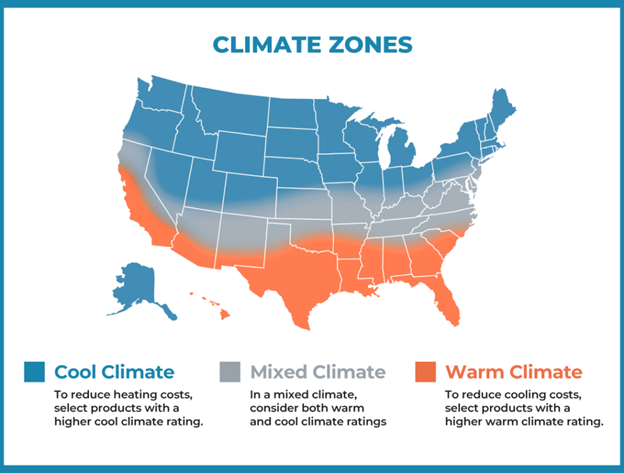
The approach to managing solar heat gain through windows and skylights should be different for different climates. In cold climates, one can take advantage of solar heat gain to provide much needed heat in winter, but in hot climates, protection from solar heat in summer takes priority.
In areas with long heating seasons, ensure solar access to the south is not shaded in winter. Allowing solar access to east- and west-facing windows in winter is helpful as well, as they can still be a significant source of heat. Providing shading for east-, south-, and west-facing windows in the summertime is valuable in nearly any U.S. climate.
In hotter climates, highly effective shading of east- and west-facing surfaces is of primary importance. In the far south, even north-facing glass should be shaded, as these windows and doors will receive direct solar radiation in mornings and evenings in the summer.
Training
Compliance
Compliance
Retrofit
The simplest approach to solar control for windows in a retrofit situation is to use window attachments as described by the Attachments Energy Rating Council (AERC) and the Efficient Window Coverings (EWC) website. See also the Low-E Exterior Storm Windows guide, and the Interior Storm Windows and Panels guide for information on high-performance storm window retrofits. Interior attachments will generally be simpler in a retrofit situation than exterior attachments.
More
More Info.
Access to some references may require purchase from the publisher. While we continually update our database, links may have changed since posting. Please contact our webmaster if you find broken links.
The following authors and organizations contributed to the content in this Guide.


